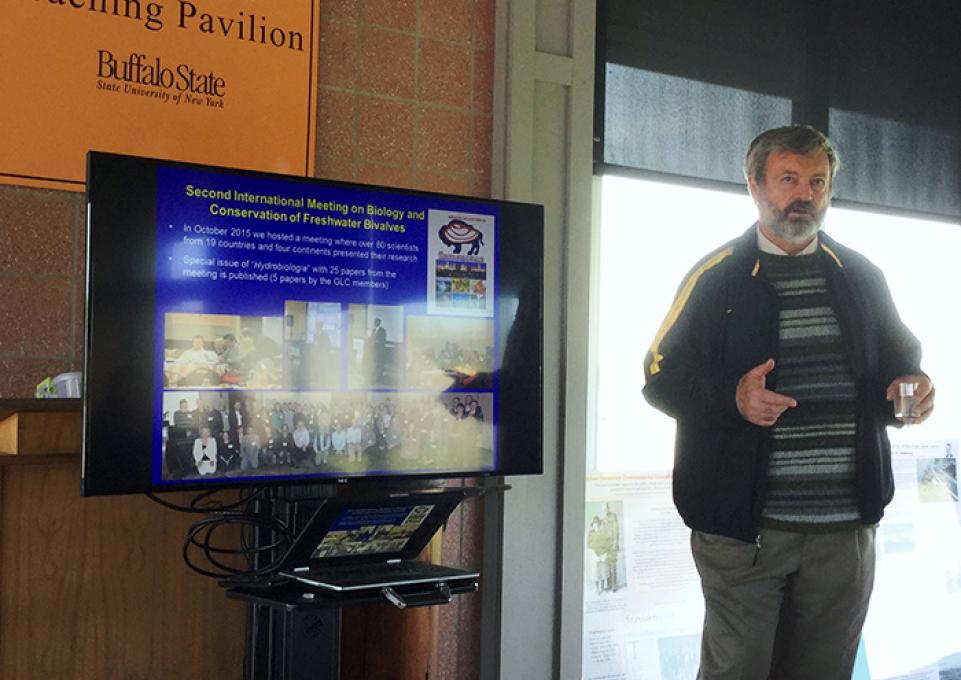
On a beautiful spring day, faculty members, scientists, and technicians assembled at the Dick Smith Pavilion at the Great Lakes Center Field Station. Alexander Karatayev, director of the Great Lakes Center at Buffalo State, presented the annual report and outlined future plans.
Karatayev reported that the center currently has 11 full-time employees, including scientists, faculty members, research technicians, field station personnel, and support staff. The center also employs research assistants, many of them undergraduate and graduate students from Buffalo State and the University at Buffalo. The Western New York Partnership for Regional Invasive Species Management (PRISM), a sponsored program funded by the New York State Department of Environmental Conservation (NYS DEC) through the Research Foundation, is also administered by the center. PRISM is currently conducting a search for a project manager.
A much-needed upgrade to the launching ramp at the Field Station is scheduled to begin in July, and efforts are underway to replace the current barge with a permanent dock. Mark Clapsadl, field station manager, has launched the Great Lakes Observation System (GLOS) buoy. The buoy provides real-time data to scientists and lake managers. Katie Hastings, instructional support associate, has begun this year’s long-term monitoring efforts.
“Since 2013, we have been conducting one of the world's largest monitoring of benthic invertebrates across the five Great Lakes,” said Karatayev who, with Lyubov Burlakova, is a project director. The project makes the data available to environmental and fisheries managers. These studies are part of a U.S. EPA-sponsored Long-term Biological Monitoring project for 2012-2017 in collaboration with Cornell University (study zooplankton and chlorophyll).
The emerald shiner project has been completed, and project director Alicia Pérez-Fuentetaja, professor of biology and research scientist, was among those who presented at the recent International Joint Commission public hearing in Buffalo, New York. The IJC advises the United States and Canada regarding the health of the Great Lakes ecosystem. With Pérez-Fuentetaja as their faculty mentor, a number of graduate students are co-authoring research results to be published this year.
Eleven students graduated from the Great Lakes Ecosystem Science (GLES) program in 2017. Seven graduated from the Professional Science Master’s program, which is designed to provide STEM practitioners—in this case, Great Lakes ecosystem specialists—with managerial and professional skills including communication, leadership, and project management. Another four graduated from the master of arts program, which prepares graduates for research positions or academic careers.
“It’s not too late to apply for the fall 2017 semester,” said Kelly Frothingham, program coordinator and professor and chair of the Geography and Planning Department. “We have a very active research community that includes scientists and faculty members from several departments as well as the Great Lakes Center. Students interested in any aspect of the Great Lakes ecosystem from fisheries to mapping invasive species can customize the program to their interests.”
Three new research projects have been funded, with funding for an additional three projects in the proposal phase.
